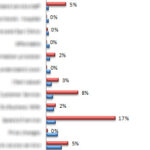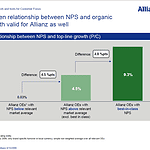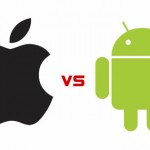In the search for the perfect customer feedback metric there is an ongoing arms race.
It started with the venerable Customer Satisfaction. Then came the Net Promoter®. More recently we have seen the Customer Effort Score. What about Net Emotional Value (NEV) or Net Value Score?
Nobody wants to be seen dead in last year’s customer feedback metric (oh the embarrassment, I could just die) but with so much choice it naturally leads to the question: which customer feedback metric is the best?
(Spoiler alert: Net Promoter Score® comes out ahead of pack but read on for the reasons.)
Why Do We Need a Metric in the First Place?
The first question you really need to ask yourself is: Why do I even need a customer feedback metric? Well there are three reasons:
1. Proxy for Customer Loyalty
Most of the time customer feedback is about understanding what you need to change to improve customer loyalty, and referral propensity. So you need an index, proxy or measure for the loyalty of each respondent.
2. Benchmark Progress
As you continue to improve your customer experience you need a measure against which you can compare yourself. How much better, or worse, are we than last quarter? You might also want to benchmark yourself against other companies.
3. Dependent Variable
In statistical terms you also need a useful dependent variable that you can use to determine how each of your independent variables (service and product attributes to you and me) impacts on customer loyalty and how important is each one.
The Options
At the moment there are really four common options, plus a couple of new players on the block, for the best customer feedback metric. Let’s look at each of them in turn.
Customer Satisfaction
This is the maiden Aunt of Customer Feedback Metrics; it’s been around for many, many years and is simple to use. If you’ve seen it once you have seen it a million times. Kindly, familiar and always ready to fill its place in the survey question line up.
It is pretty simple to understand:
How satisfied were you with your recent product?
The key downside of Customer Satisfaction is its lack of predictive power. Generally satisfied customers don’t often behave much differently to generally dissatisfied customers. That begs the question; why ask if what you are getting is not useful?
Basically it does not perform task 1. Proxy for Customer Loyalty very well.
Net Promoter Score(R) or NPS
This was officially launched into the public realm in late 2003 in a Harvard Business Review. Not happy with the predictive power of Customer Satisfaction, Frederick Reichheld, Bain and Satmetrix tested a range of questions with the goal of identifying a question that would predict future actual future purchasing patterns. The result was Net Promoter Score.
How likely would you be to recommend our company to a friend or colleague on a scale of 0 – Very Unlikely to 10 Very Likely.
By subtracting the percentage of 0-6 scores from the percentage of 9 and 10 scores you arrive at the NPS. This was shown to be more highly correlated, more often, with future revenue growth.
Customer Effort Score
Not satisfied that the NPS was as good as it could get, a competitor to the companies that created NPS did some research and identified another question that they claimed also provide a good proxy for real customer loyalty:
How much effort did you personally have to put forth to handle your request on a scale from 1 (very low effort) to 5 (very high effort)
Once again this question was shown by the authors to be a good proxy for loyalty, potentially as good as NPS.
For more information on this question see this Harvard Business Review Article
Statistically Accurate Scores
Here, I’m lumping the very many company or industry specific multi-part scores.
Typically these scores use advanced statistical techniques to examine the response from two or more questions and create a composite score. The tend to end up looking like this:
12.5% of Customer Satisfaction + 23.6% of would buy again for the first time + ….
Implemented correctly these scores can be more accurate than any of the other scores.
They do however require advanced statistical skills to implement and can be difficult for staff to understand and use.
Flavour of the Month Question
Almost every month a new question is launched: Net Emotional Value (NEV), Net Value Score, WoMI (Word of Mouth Index). Each of these vies to be an even better predictor of loyalty. Each of the developers is looking for a silver bullet in the science of finding the perfect customer feedback metric.
I am not going to go into details for each of these flavour of the month metrics mostly because they change so frequently they tend to violate the “general acceptance” and “body of support material” tests.
Criteria for Selection
So which is the best metric?
That depends on what you are trying to achieve.
Some people will suggest that the best score is the score with the highest accuracy. That is not necessarily the case as there are many elements of the score that will influence how easy it is to succeed in implementation.
Comparing the Options
When comparing the different options what attributes are important. From our experience the following attributes are the most important in a customer feedback metric.
Predictive Power: is the score an effective predictor of customer loyalty?
Ease of Understanding by All Staff: Can it be explained to and understood by all staff quickly and easily?
Ease of Use: Can the score be used to drive change in the organisation?
Ease of Calculation: Can the score be calculated quickly and easily?
General Acceptance: Is the score generally well accepted in the business community?
Body of Support Material: Is there a good body of material in the public domain on which organisations can build their implementation approaches?
Ease of Loyalty Driver Analysis: How easy is it to perform loyalty driver analysis?
Comparing the Options
Let’s score each of the metrics. Yes, this is a subjective rating but I’m happy to debate these scores with anyone.
Leave a comment if you disagree with a rating here and I’m happy to discuss.
| Metric | CSAT | NPS | CES | Statistical Score | Flavour of the Month |
|---|---|---|---|---|---|
| Predictive Power | Low | Good | Good | Best | Generally Un-proven |
| Ease of Understanding by all staff | Good | Good | Good | Low | Varies |
| Ease of Use | Good | Good | Medium | Good | Varies |
| Ease of Calculation | Good | Good | Good | Low | Varies |
| General acceptance | Good | Good | Increasing | Low | Low |
| Body of support material | Good | Good | Low | Good | Very low |
| Ease of loyalty driver analysis | Good | Good | Low | Good | Varies |
The Winner Is: Net Promoter Score
NPS is not the most accurate predictor of customer loyalty but it is the overall most effective approach. Overall it is as easy to user as customer satisfaction while also being more accurate.
Conclusions
Net Promoter Score is not perfect by any means.
Some researchers argue that the “net” approach reduces the information in the score, others highlight that it is not as accurate a predictor as could be achieved, and still others say that it is not a good predictor of word of mouth promotion. On the other hand some others say the net value makes the score more predictive.
All this may be true but the most import attribute of any customer feedback indicator is that it can be used by the business to improve and become more customer focused. NPS has proven that it can do this better than the alternatives.
Do you disagree with any of my scores or selection criteria? Let me know in the comments below.
Get the Business Leader's Guide to Net Promoter Score Download Here



